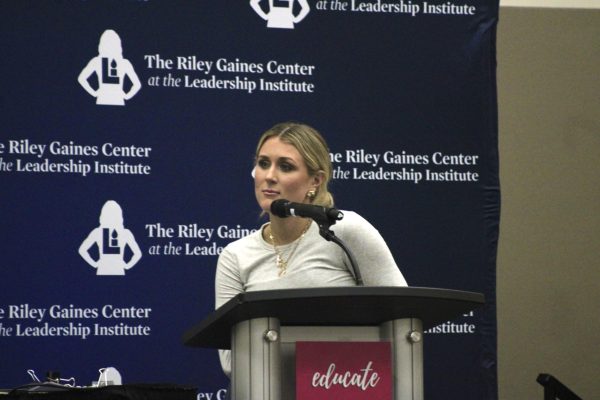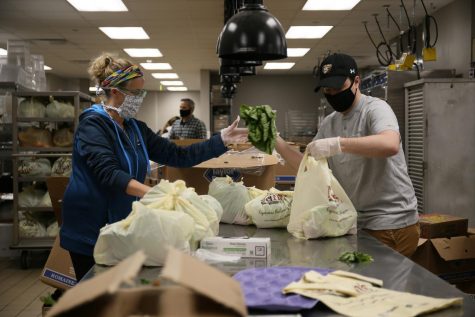Professors, faculty and staff prepare for transition to fully online courses
Without even realizing it, students and instructors had their last in-person class sessions of the 2019-2020 academic year on Wednesday, March 11.
Oakland University administration made the decision to suspend all in-person instruction after 5 p.m. on March 11 in response to the COVID-19 emergency. Effective Monday, March 16, courses will be delivered in online and remote forms for the remainder of the semester.
In the initial statement sent to the campus community, President Ora Hirsch Pescovitz acknowledged the disruptive nature of this decision and the challenges that will follow, but reassured that these actions are being taken for the safety and health of the community.
One of those challenges is getting all instructors transitioning their courses that were previously meeting in-person to online formats. Since OU is a member of the American Association of University Professors (AAUP), there is a formal agreement that addresses the mandating of online formats for courses that count for credit.
Paragraph 92 of this agreement states, “Faculty may voluntarily engage in the development and delivery of courses for credit to be delivered online, through distance learning methods, using technologically innovative methods and/or through the use of emergent technology.”
Amy Pollard, president of the OU-AAUP chapter, explained she has never seen a similar situation calling for mandatory online teaching. However, administration did seek input from the union and made the call for full online instruction, which overrides that section of the agreement.
“This is a big change to the normal course of order, a temporary change,” Pollard said. “Various departments are handling it differently … What we are trying to do as the union and what we are in the middle of doing, is trying to create a Google site to collect as much of that information as we can in one space for faculty to turn there.”
As the transition continues, faculty and instructors are at different experience levels with online teaching. Some instructors use a variety of technological resources and have had online classes in the past, while others do not use any technology for courses, which includes Moodle.
“Different faculty are at very different learning curves at this moment,” Pollard said. “The faculty really want to make sure their students are being taken care of. It’s a big stress and burden on students and faculty.”
Professor Erin Meyers from the Department of Communication, Journalism and Public Relations has taught online classes before, but is still facing challenges with the transition. Meyers never planned for her courses to be taught fully online and is working with any issues of internet access her students might encounter.
“I think it’ll be rough at the beginning,” Meyers said. “There will be glitches.”
She also sees the isolation from making social connections in class a future problem.
“A class that is highly discussion-based is hard to think about how we’re going to transition that online,” Meyers said.
From the Department of Religious Studies, Professor Joseph Klein has never taught an online course because he feels that in-person instruction is “the foundation of the university experience.”
“I’ve always resisted teaching online because I think face-to-face teaching and interaction within the classroom is at the heart of any teacher-student relationship,” Klein said.
With the shift to the form of instruction, professors still need to meet learning outcomes for the semester. With the semester being just halfway completed, there are still objectives and material to cover.
“We want our students to understand, appreciate and be able to meaningfully use the information we convey,” Klein said.
Professors like Meyers understand the temptation to tune out, especially with the overwhelming changes, but creative aspects like online video lectures, online meet-ups and group discussion will be incorporated in some courses. Meyers feels WebEx, an extension through Moodle, and the Google Suite will be helpful resources. Academic companies are also making some of their products free and expanding access to them.
One of the biggest resources for faculty and students is coming from e-Learning and Instructional Support (e-LIS), which has shifted all efforts to supporting instructors and students with the transition.
Shaun Moore, director of e-Learning, explained this is the busiest time the office has experienced since his start at OU in 2001.
For support, e-LIS has been doing online workshops while extending weekend hours and receiving assistance from Classroom Support and Instructional Technical Services (CSITS) Helpdesk for the influx of requests. In Moodle, there are also links to resource guides.
“We’ve created two guides, one for faculty and students, linked in Moodle, so faculty and students will see the appropriate guide when they log in,” Moore said.
Throughout this process, errors are to be expected. Instructors ask for patience and cooperation as they navigate the rest of the semester with their students online.
“I think it’ll be hard,” Meyers said. “I think everybody needs to be patient.”









